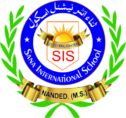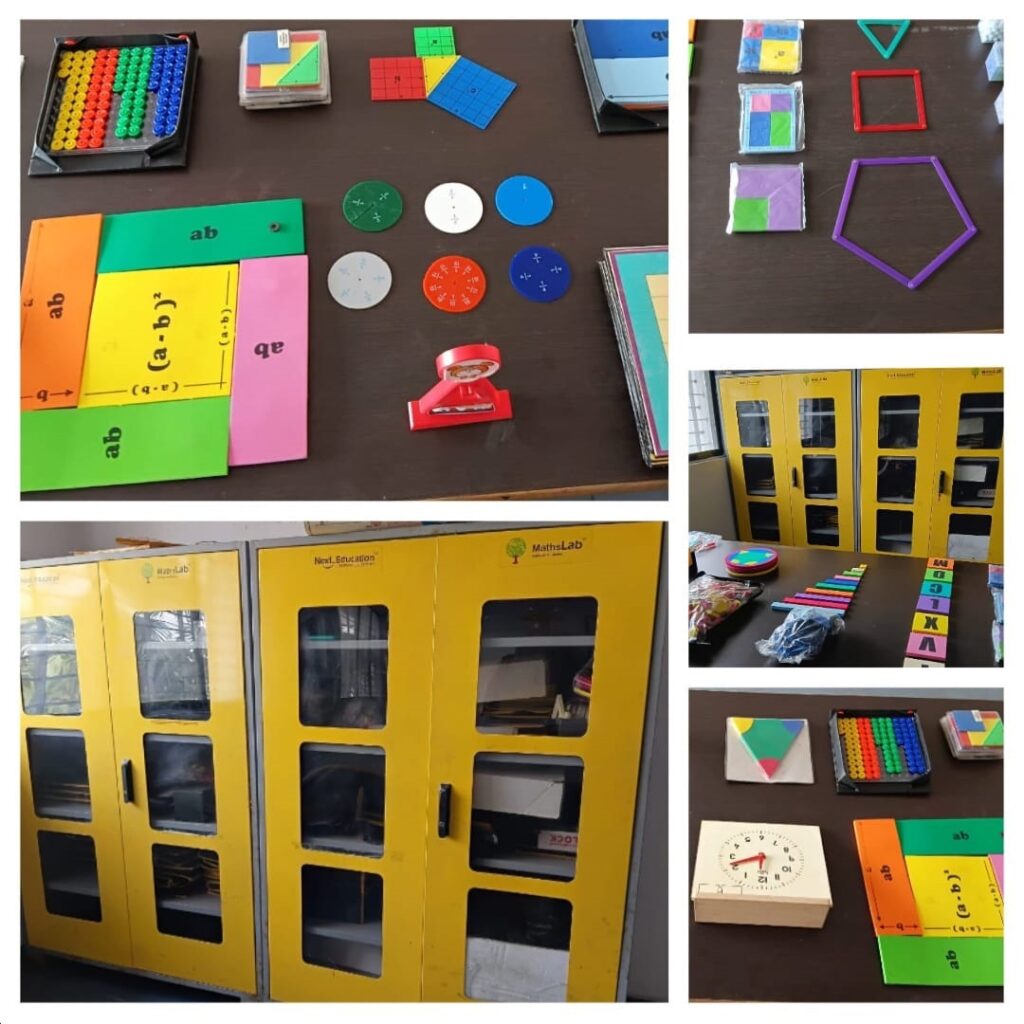
Math’s Lab
A math lab is a dedicated space where students can explore mathematical concepts through hands-on activities, models, experiments, and interactive tools. It encourages experiential learning, helping students understand abstract mathematical ideas by connecting them to real-life scenarios. The aim of a math lab is to make learning mathematics more engaging and interactive, improving students problem-solving and critical-thinking skills.
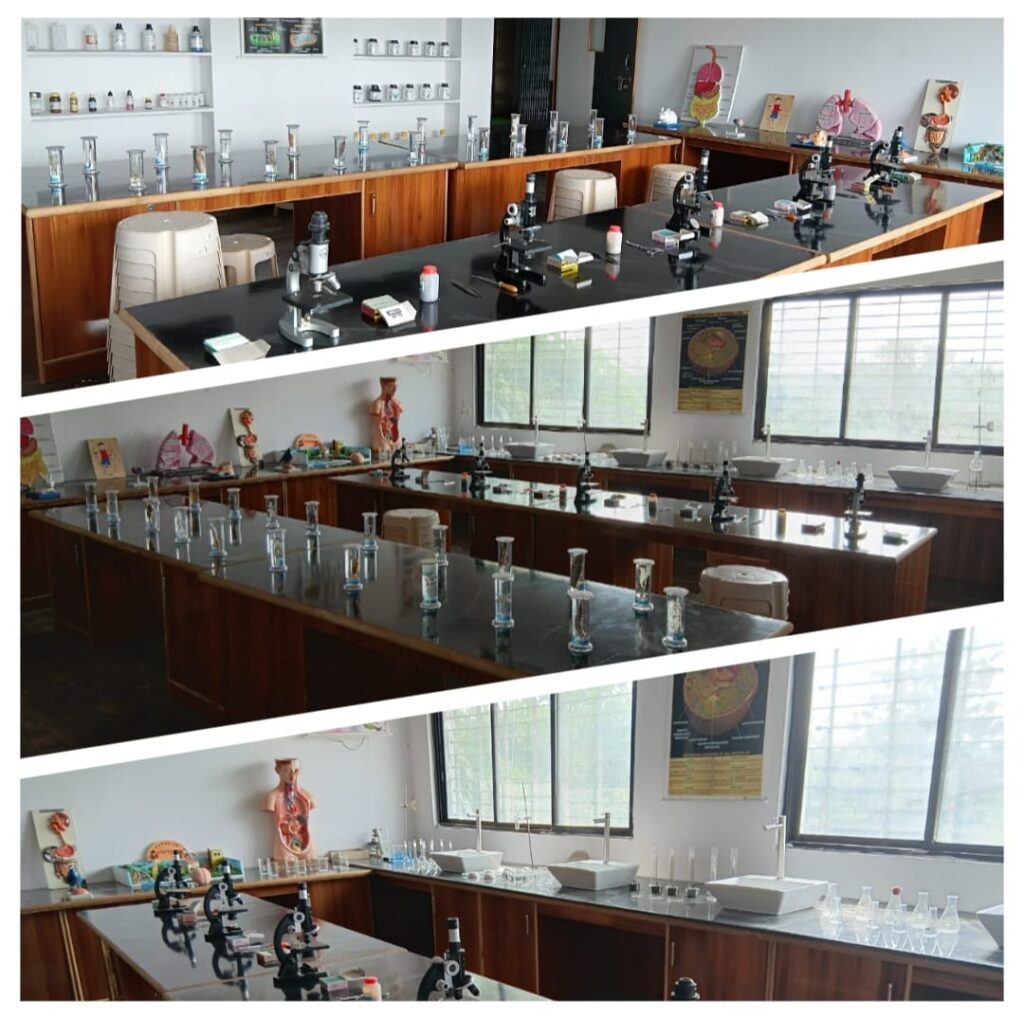
Biology Lab
A biology lab in a school is a space for hands-on learning of biological concepts. It includes equipment like microscopes, test tubes, petri dishes, and dissection tools. Students perform activities such as observing cells, testing food for nutrients, and studying microorganisms. Safety rules like wearing gloves, proper disposal of waste, and following instructions are essential. The lab enhances practical understanding and critical thinking skills. It fosters curiosity and a deeper interest in biology.
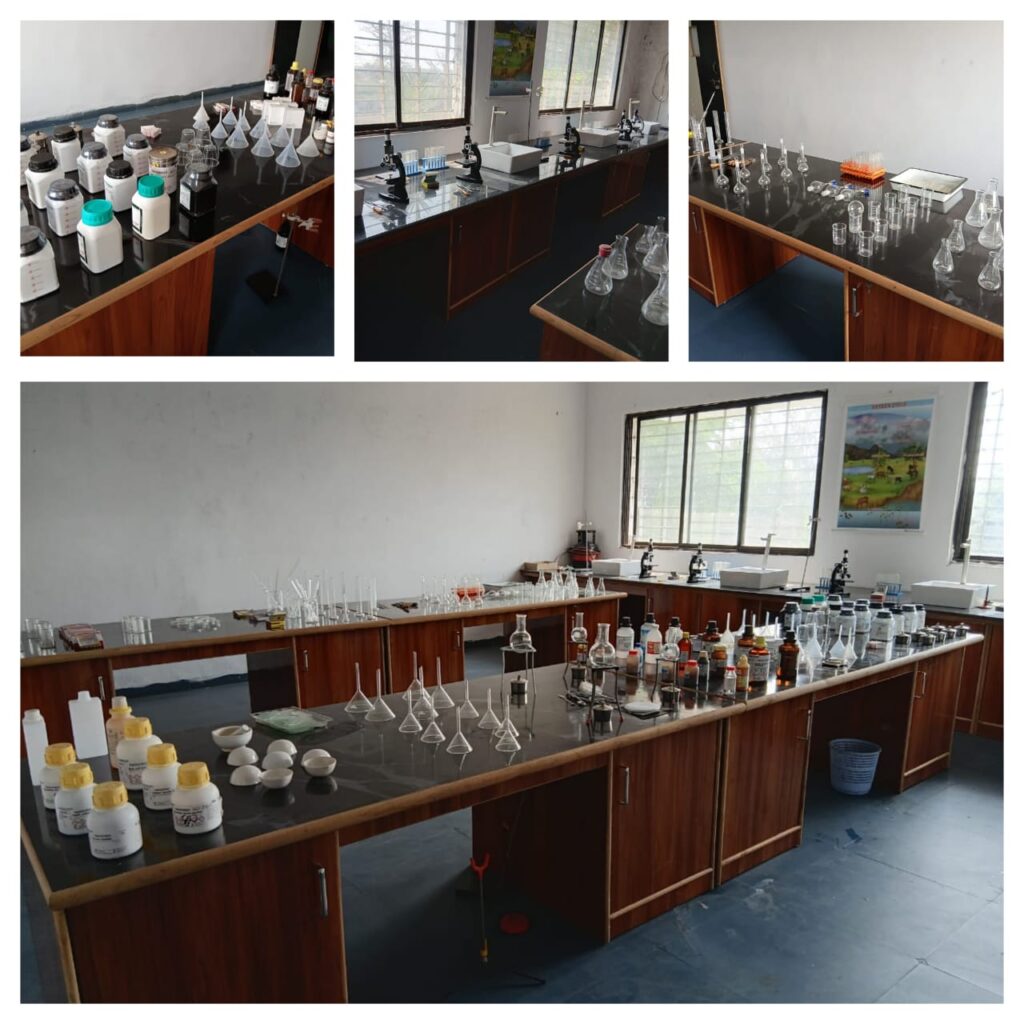
Chemistry Lab
A school chemistry lab is a space where students conduct experiments to learn practical applications of chemistry. It is equipped with essential tools like beakers, test tubes, burners, and reagents. Students perform activities such as titration, acid-base reactions, and salt preparation under strict safety guidelines. Proper safety measures, including lab coats and goggles, are mandatory to prevent accidents. Experiments help students understand theoretical concepts through hands-on learning. The lab fosters critical thinking, observation, and scientific skills in a controlled environment.
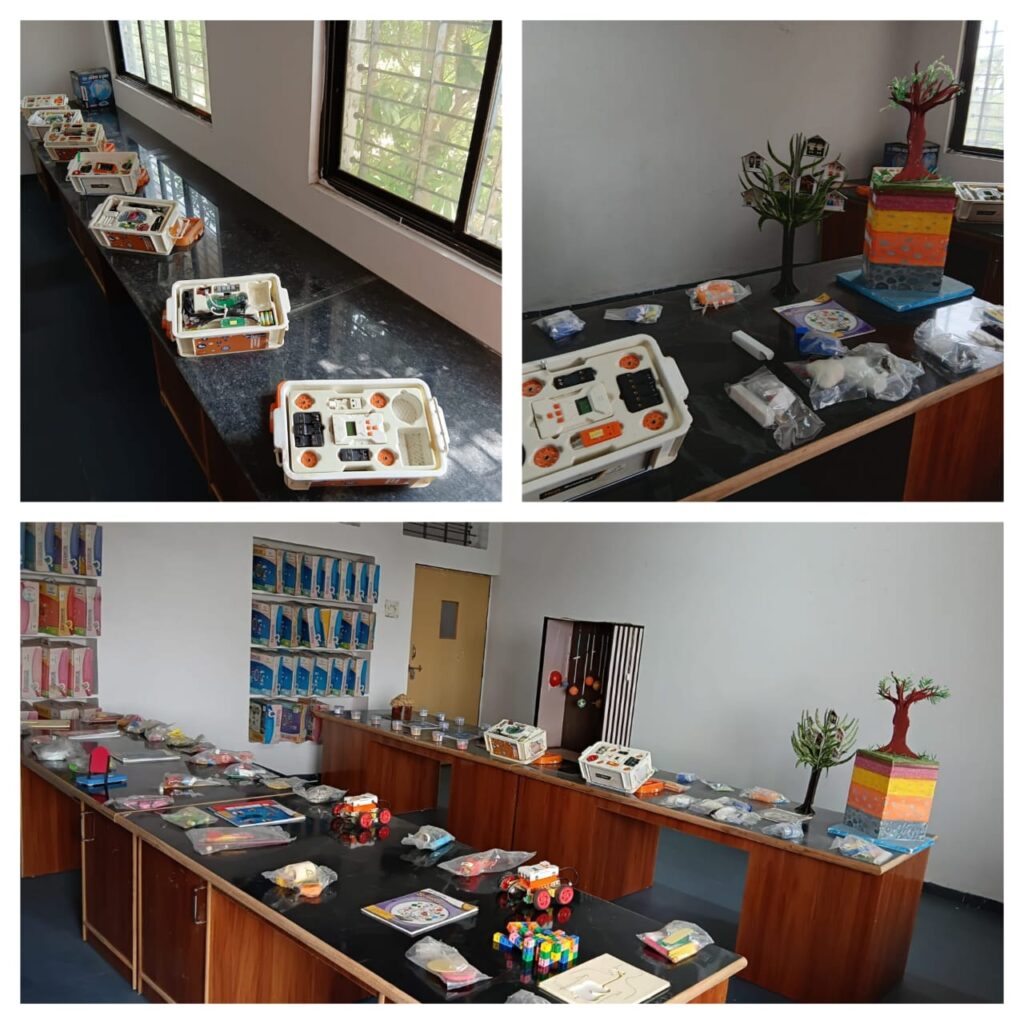
Composite Lab
A composite lab in school is a shared space for physics, chemistry, and biology experiments. It is equipped with basic apparatus like microscopes, test tubes, lenses, and electrical components. Students conduct experiments on topics such as motion, chemical reactions, and plant cell observation. Safety measures, like wearing protective gear and careful handling of equipment, are strictly followed. The lab promotes hands-on learning and helps students understand scientific concepts practically.
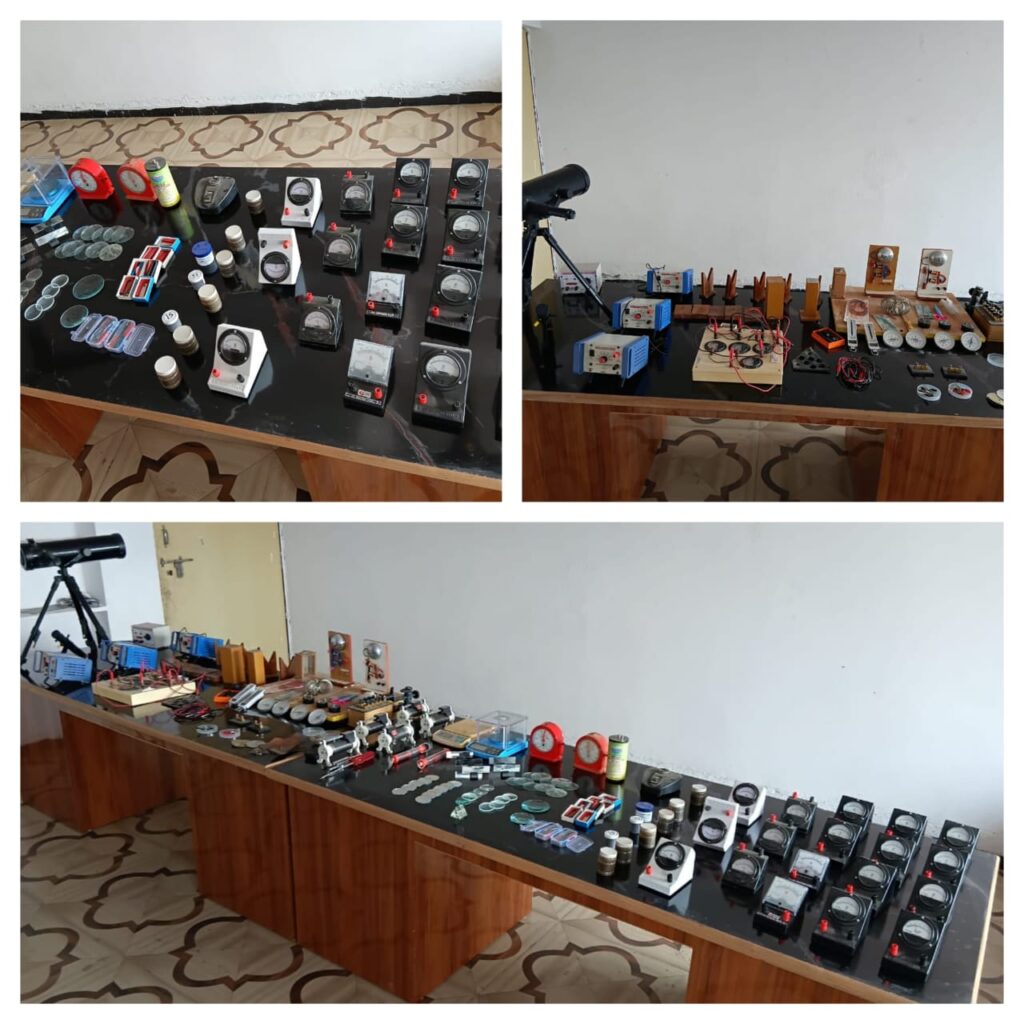
Physics Lab
A school physics lab is where students perform experiments to understand physics concepts. It has equipment like pendulums, lenses, mirrors, and circuits. Common experiments include studying motion, light, electricity, and magnetism. Safety rules, such as careful handling of electrical devices, are followed. The lab helps students connect theory with practical applications and develop analytical skills.

Library
A library in a school is a dedicated space that provides students and teachers access to a wide range of resources, including books, magazines, newspapers, reference materials, and digital resources. Its primary purpose is to support learning, encourage reading habits, and promote research and knowledge exploration.
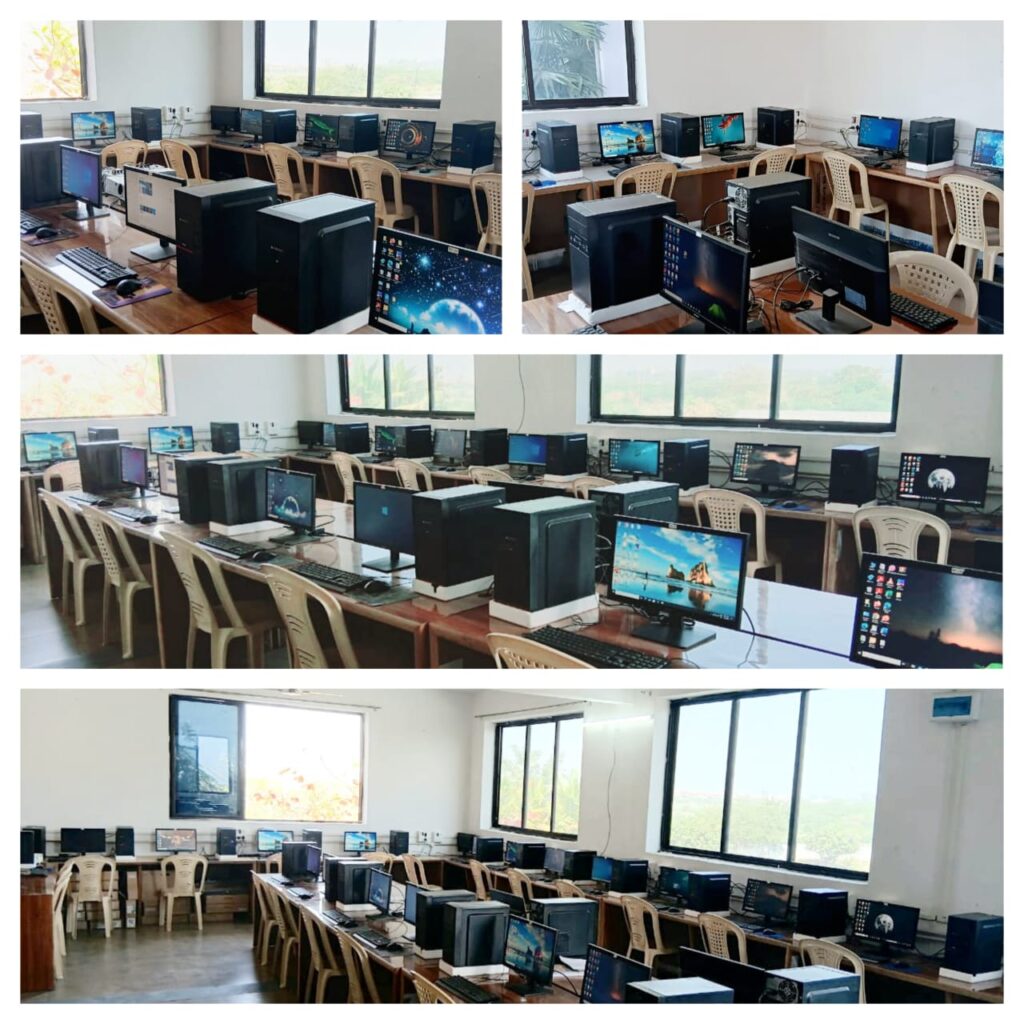
Computer Lab
A computer lab in a school is a specialized classroom equipped with computers, software, and other digital tools that facilitate learning and instruction in various subjects, particularly those involving technology and digital literacy. The lab provides a space where students can gain hands-on experience with computers, improve their technological skills, and apply these skills to academic tasks.
